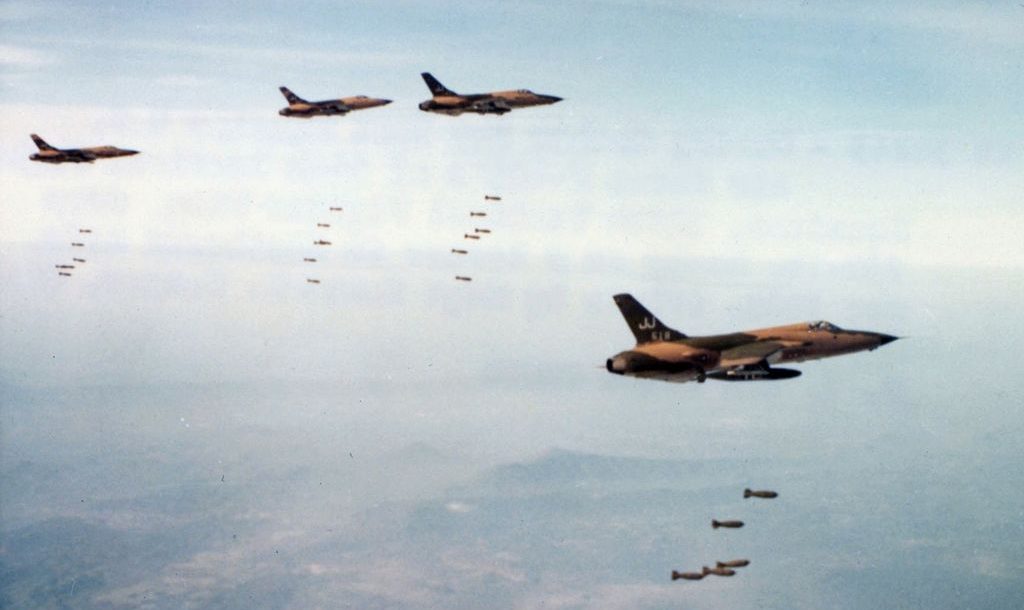On this joint Policy Forum and New Mandala podcast, Josh Kurlantzick discusses his new book on the CIA’s secret war in Laos, and how the legacy of the conflict still echoes through US foreign policy today.
America’s Secret War in Laos was a proxy conflict fought during the height of the war in Vietnam in the 1960s, and was orchestrated by the US Central Intelligence Agency. While the enormous devastation inflicted upon Laos during the war is now well-known, the details of the CIA’s role has, until now, been a tale left largely untold. In this week’s Policy Forum Pod, Josh Kurlantzick discusses his new book ‘A Great Place to Have a War: America in Laos and the Birth of a Military CIA’, which draws upon extensive interviews and newly declassified CIA records to tell the tale of the Secret War. Listen here: http://bit.ly/PFPLaosWar
Josh Kurlantzick is a Senior Fellow for Southeast Asia at the Council on Foreign Relations, and was previously a scholar at the Carnegie Endowment for International Peace. He has served as columnist and correspondent for numerous news organisations, including the Economist, the New Republic, and the American Prospect. He is also the winner of the Luce Scholarship for journalism in Asia.
Prior to its operations in Laos, the CIA was a fairly regular, run-of-the-mill intelligence agency, as Kurlantzick explains.
“They did spying, they collected intelligence, they did sabotage, they did all sorts of dark arts… there was only a relatively limited amount of military aspects to it.”
But in the 1960s, as violence swept across Southeast Asia, the CIA began an operation that would sow the seeds of its eventual military transformation.
“It was at the time of the Domino Theory, where US officials believed that if Laos became communist, communist forces would move into Thailand, they could move into other parts of Southeast Asia. So by the time Eisenhower handed over power to Kennedy, there was a significant focus on Laos, and it was one of the top foreign policy issues to the United States,” says Kurlantzick
The fear of Laos turning communist prompted US policymakers to launch a CIA operation to train and arm a number of anti-communist fighters in Laos, mostly ethnic Hmong, who could help stop the advance of Laotian and North Vietnamese communist troops.
“They were supposed to be kind of… an anti-communist Viet Cong,” says Kurlantzick. “They were the United States’ guerrilla force. It was like the reverse of South Vietnam.”
However as the war went on, the operation morphed into a massive and devastating US bombing campaign, with the goal of killing as many North Vietnamese as possible. The bombing was largely orchestrated by the CIA, and began to take the place of a coherent strategy on the ground.
“It got to a point where by the late 60s early 70s, bombers were dropping tonnes and tonnes of bombs on Laos, some of it with no clear reason other than that just they had flown to drop some of the bombs in North Vietnam, didn’t find targets, and dropped them in Laos on the way back to Thailand so as not to land with all of them.”
While Laos was left devastated by the war, the CIA had meanwhile become a much more powerful organisation.
“Laos showed… that the CIA could be a major player in the US foreign policy establishment, on the level of the Defense Department and the State Department.”
The CIA had developed the ability to launch paramilitary operations – a lesson that it would bring to bear in future operations around the world. As Kurlantzick said, a modern echo of this today can be found in the US War on Terror.
“Since 2001, the gloves are off, and much of what we saw in Laos has been repeated in other parts of the world, in which the CIA and US Special Forces are really unleashed.”
Josh Kurlantzick was in conversation with Policy Forum’s Nicky Lovegrove.
Josh Kurlantzick is a Senior Fellow for Southeast Asia at the Council on Foreign Relations, and was previously a scholar at the Carnegie Endowment for International Peace.
This piece is published in partnership with Policy Forum – Asia and the Pacific’s platform for public policy analysis, opinion, debate, and discussion.
 Facebook
Facebook  Twitter
Twitter  Soundcloud
Soundcloud  Youtube
Youtube  Rss
Rss 